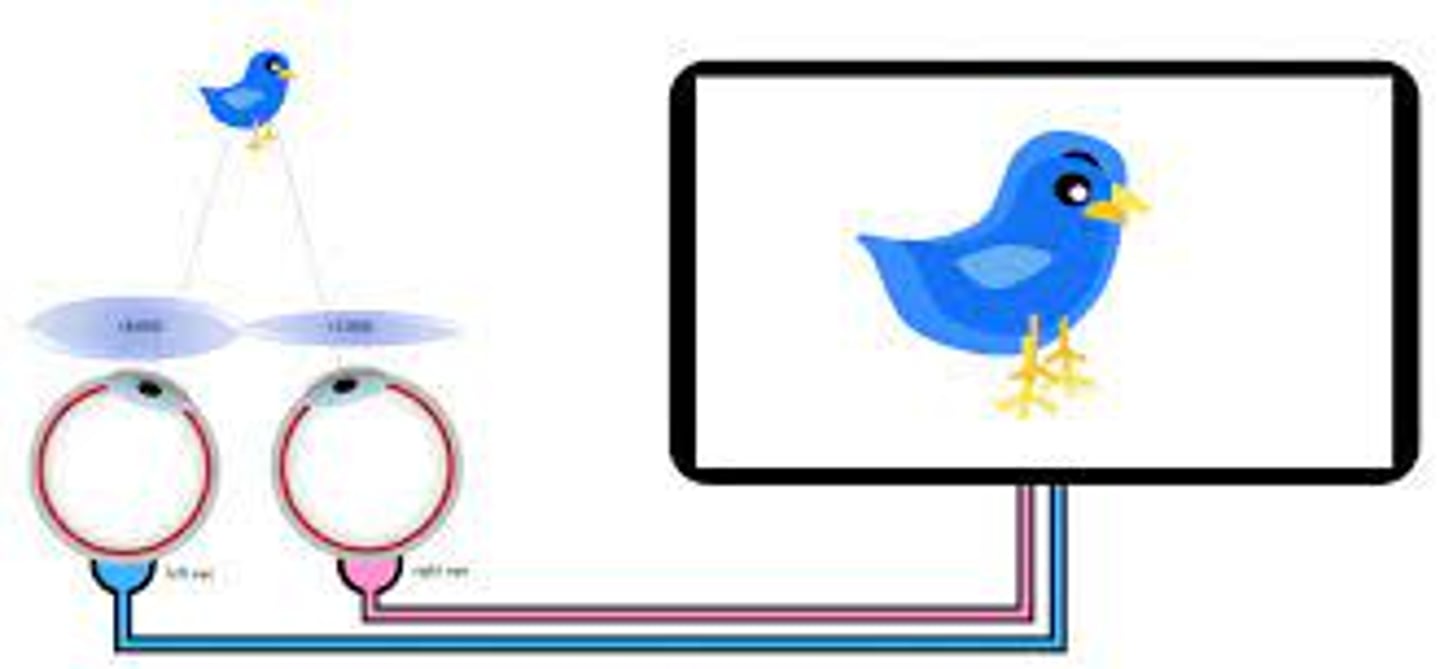Prisms
1/35
There's no tags or description
Looks like no tags are added yet.
Name | Mastery | Learn | Test | Matching | Spaced |
|---|
No study sessions yet.
36 Terms
When are prisms used?
-when defects in extraocular muscles results in imbalanced rotation between eyes
-double vision because eye can't form sharp image
-need lens to deviate light/img, allowing binocular vision
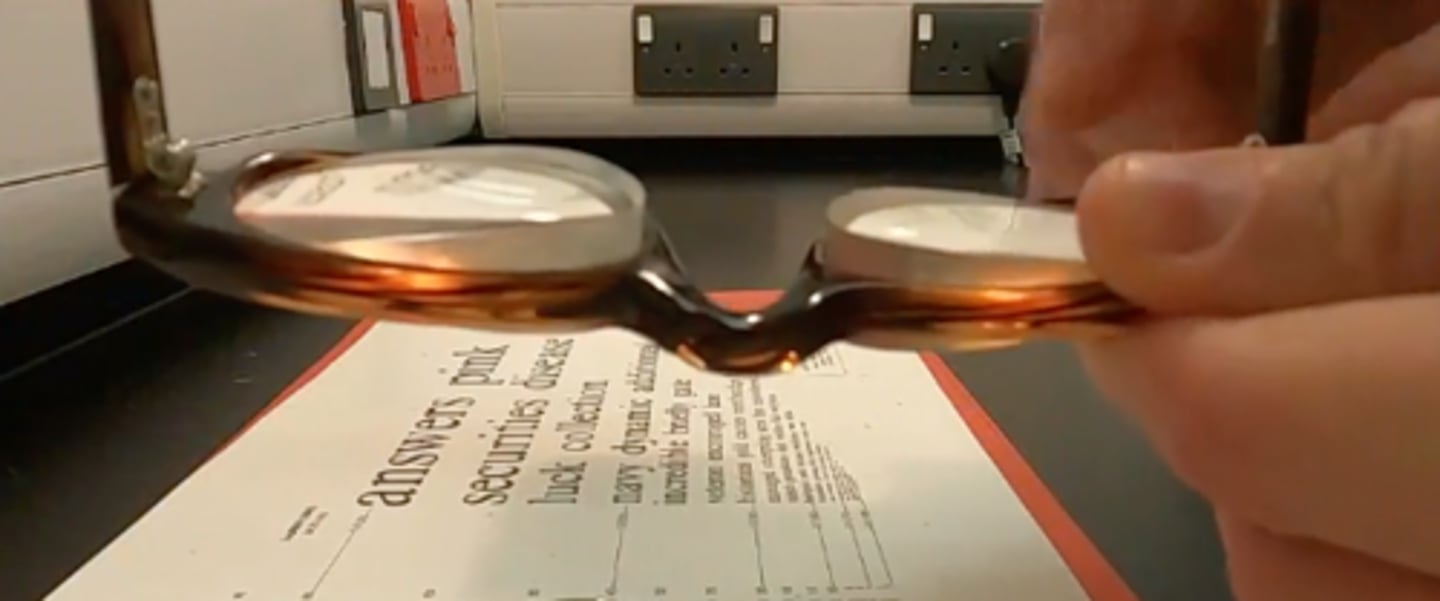
Do prisms correct ametropia?
No, only deviates the light
What is the thinnest part of the prism called?
the apex
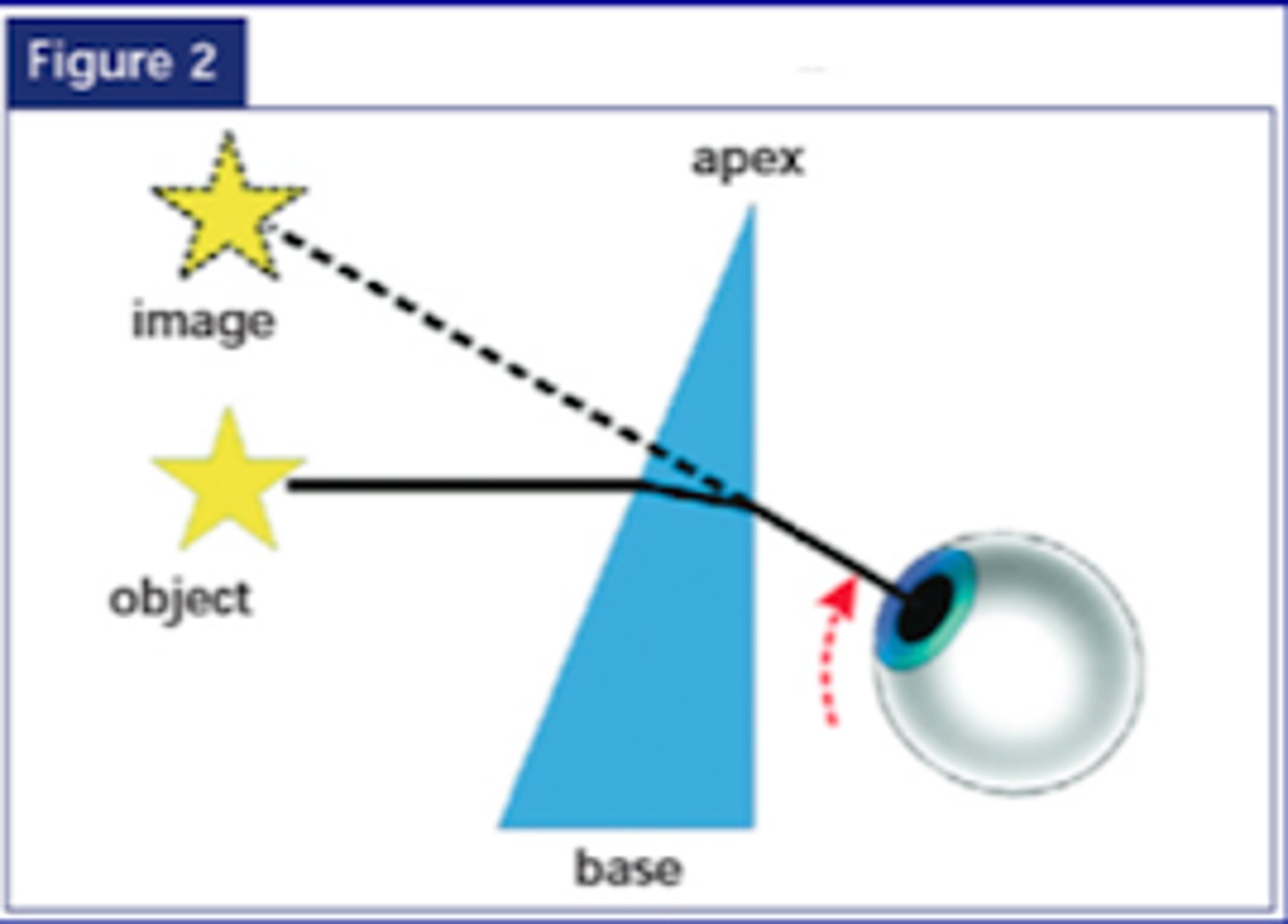
The img will be displaced towards the direction of the...
...apex
What are the 2 ways prisms can be incorporated into a lens?
-surfacing
-induced by decentration
What is surfacing?
when the prism is made into the lens @ time of being made w/ prescription
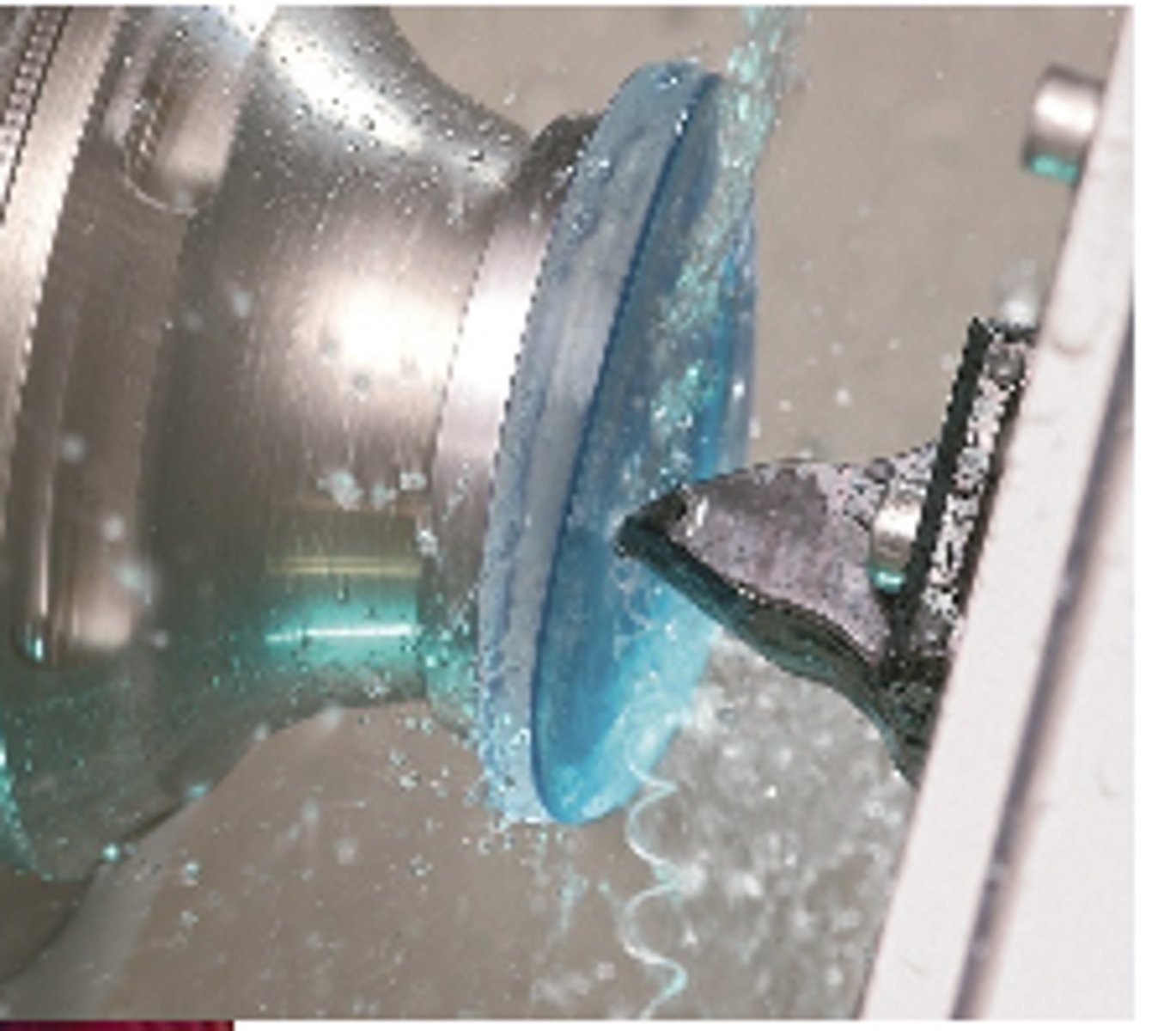
What is decentration?
when a lens is taken and intentionally decentered to take the value of the prism
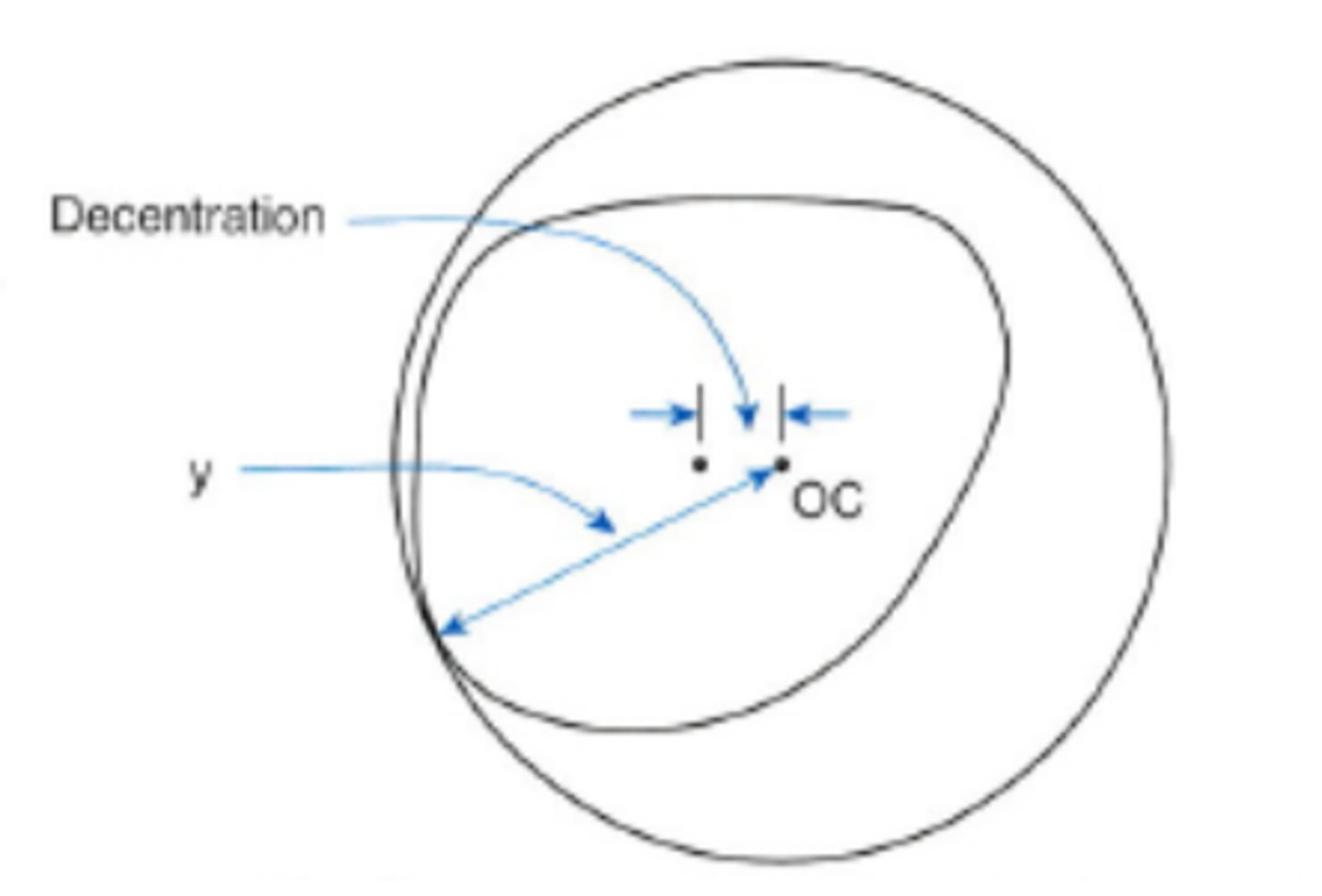
What clue tells you that there is prism in a lens?
lens will be thicker on one edge than the rest
How do you quantify the amount of prism?
prism units (prism dioptre)
-1△ means 1 unit displaced when viewed at a dist. of 100 units
i.e. displaced 1cm when viewed at 100cm
-measured in steps of 0.50△
What are the 2 ways you can indicate the direction of a prism?
1. base IN, OUT, UP, DOWN
2. ° 360, 90, 180, 270 (anticlockwise)
obvs can be any degrees e.g. 256°
When do we need to compound prisms?
if prism directions are NOT the same or parallel in one lens
i.e. if oblique prism is expressed in vertical and horizontal components
How do you compound prisms?
1. draw cross diagram w/ degrees
2. mark N, T, LE/RE
3. mark PV and PH
4. find prism amount by doing pythag
5. find prism angle by using SohCahToa
6. check on diagram which quadrant angle lies on, then adjust by +/- 180° (CAST diagram)
7. angle starts from 0=360°
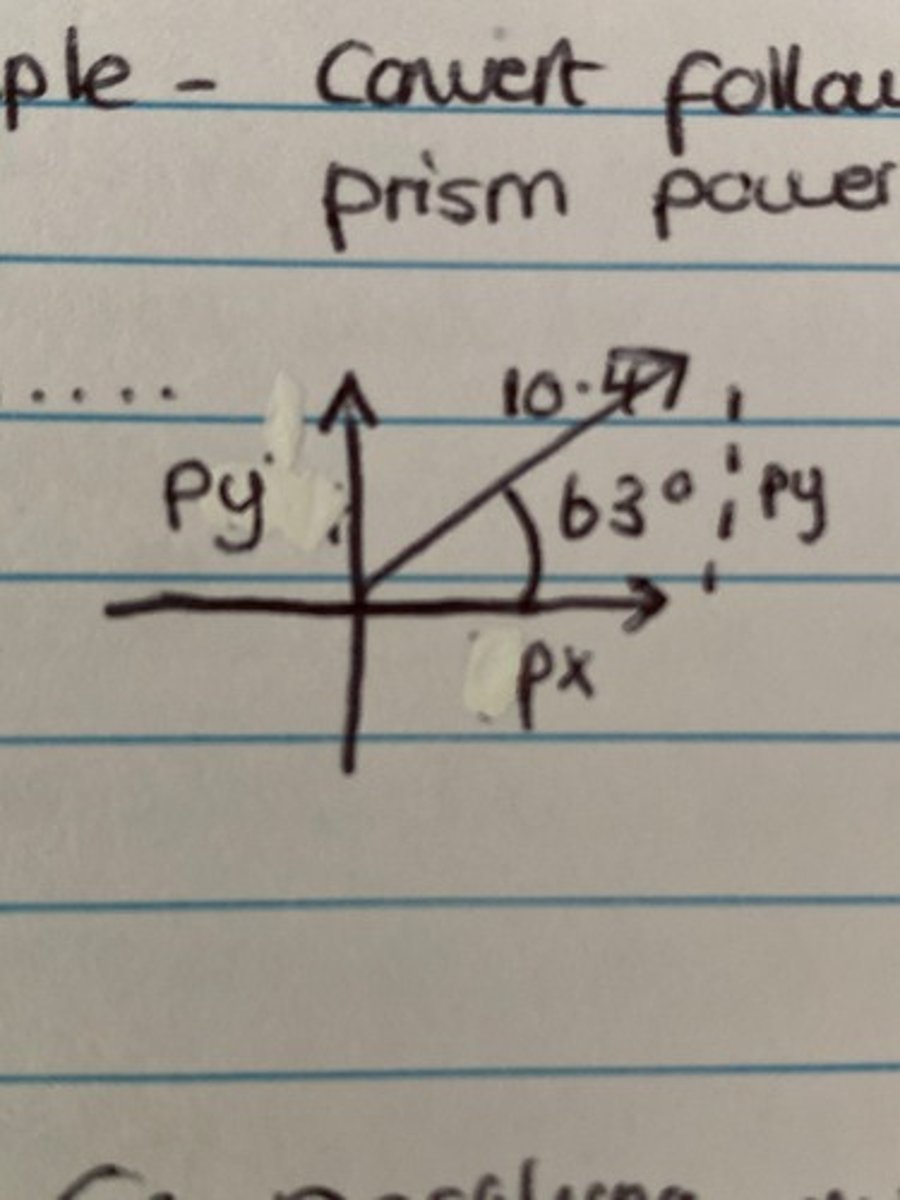
When would you resolve prisms?
when you've been given single prism in 360 notation, and need it in the horizontal + vertical component form
How do you resolve prisms?
1. use trig
2. draw cross again w/ degrees, N, T, RE/LE, PV,PH
3. find each side of triangle (prism amount) by using SohCahToa
4. write with prism dioptre and direction (base IN, OUT, UP, DOWN)
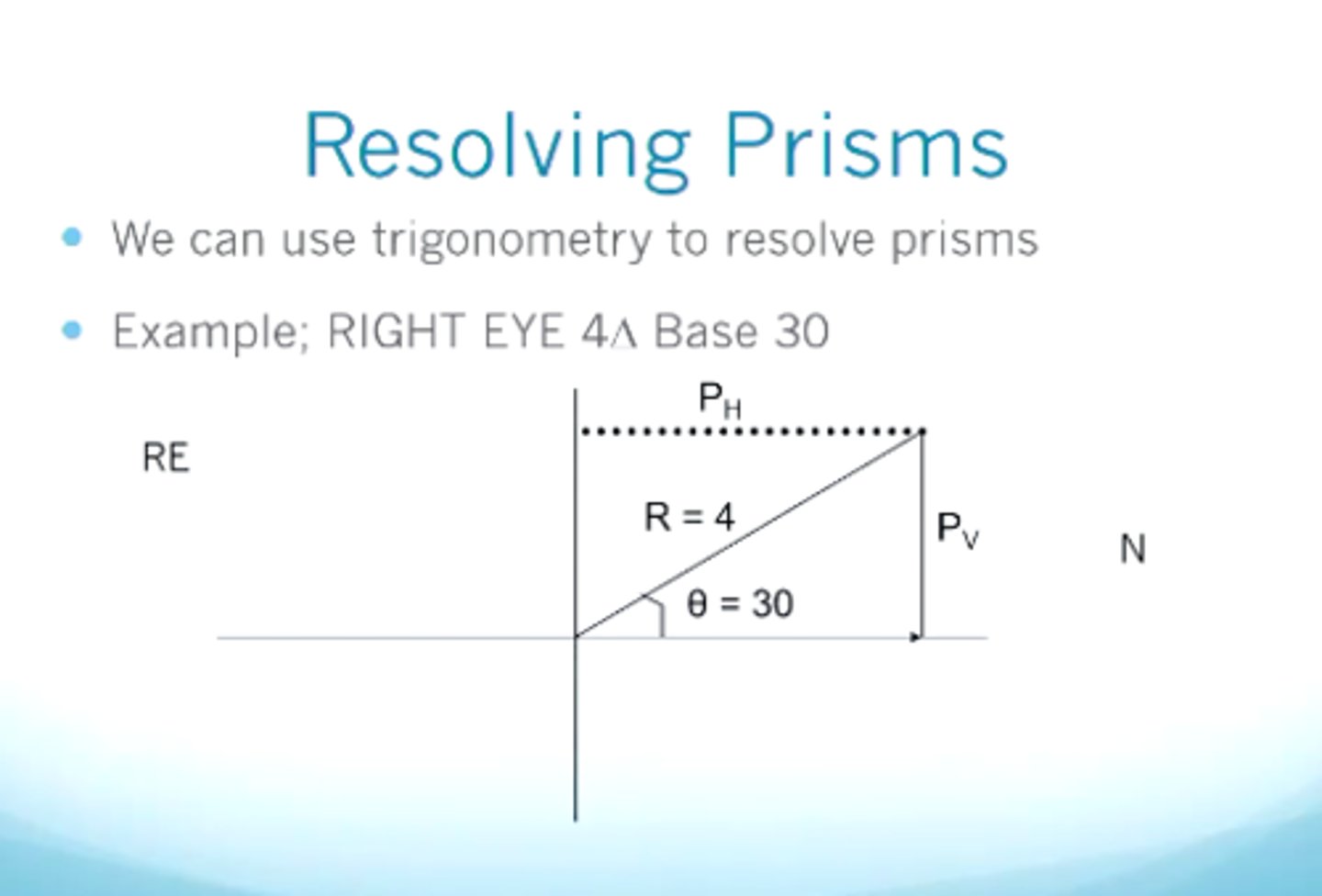
What is centration?
the positioning of the optical centre is in line with the px's pupil so best vision possible
What happens if spectacles not centered?
you get unwanted prism
When would you want decentration?
when px needs prism
How can + and - lenses be thought of as 2 prisms?
+ lens = 2 prisms in a diamond shape, where through the centre there is no prism
- lens = 2 prisms with apex's touching, again centre w/o prism

IF an eye is looking towards the lower part of a minus lens (e.g. to read), what direction of prism will the patient experience?
base down prism (bc you say in terms of where the base is, in this case it will be down if you're looking thru the lower part of a minus lens, if it was the upper part, it would be base up)
IF an eye is looking towards the lower part of a plus lens (e.g. to read), what direction of prism will the patient experience?
base up bc base is above

What is Prentice's rule?
formula used to determine amount of induced prism in a lens
Prentice's rule formula
P = cF
P amount of prism in prism dioptres
c is the decentration in cm
F is lens power in Dioptres
BTW SIGNS DON'T MATTER WHEN CALCULATING
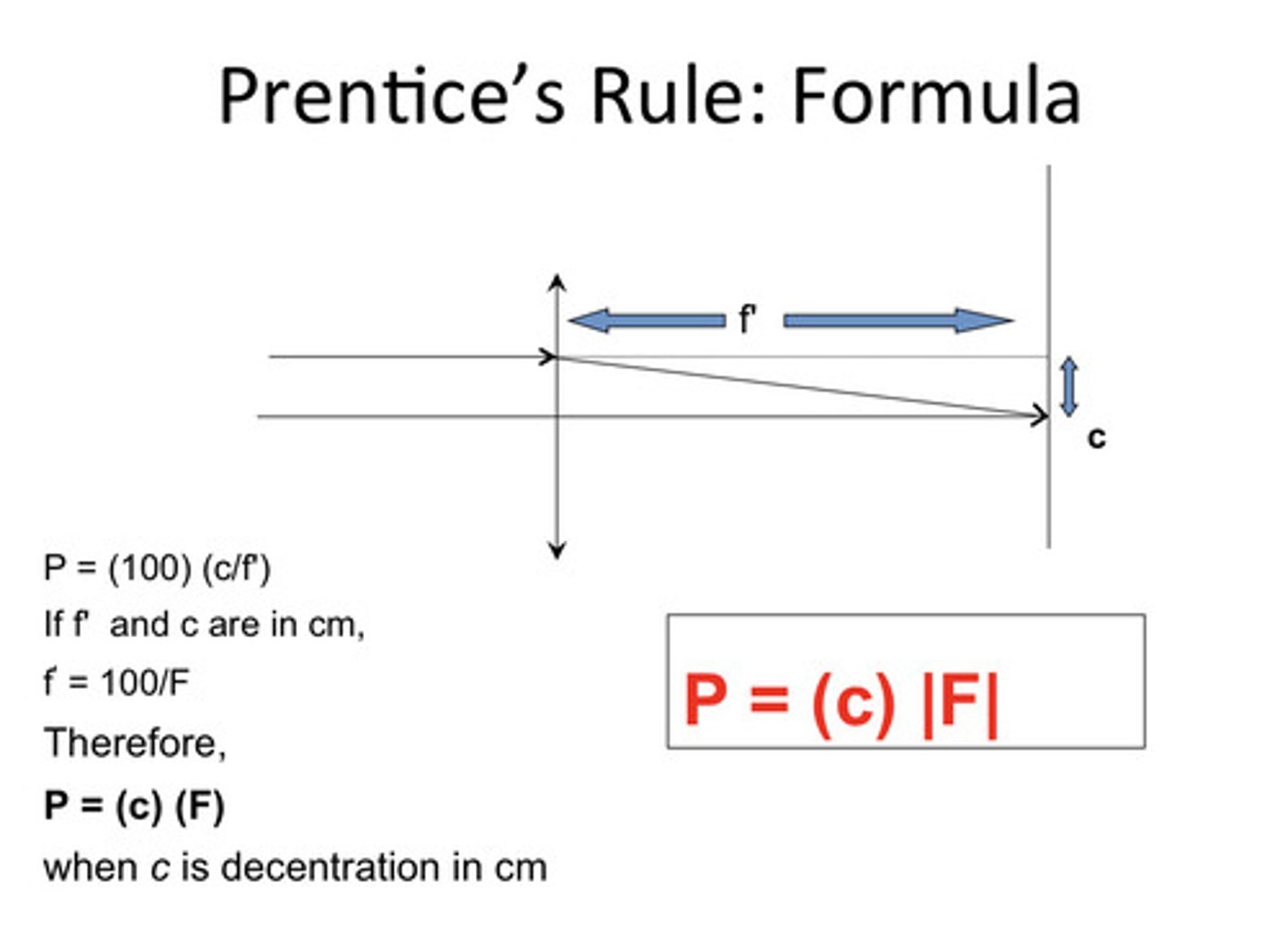
Does the + or - sign matter in prentice's rule?
no, always positive
What do you need to convert to cm before you use Prentice's rule?
decentration(c) in mm
How do you work out the prismatic effect induced for a toric lens?
1. transpose so you have sphere axis along and other meridian sphere axis +/- 180
2. use P = cF and find PV and PH
3. draw triangles (plus/minus lens) and determine if it's base UP/DOWN/IN/OUT
The PV for a toric lens will be the power along...
...90 degrees
The PH for a toric lens will be the power along...
...180 degrees
How would you rearrange Prentice's rule to calculate amount you want to decenter if you want to create prism by decentration?
c = P/F
If you're asked to work out amount of decentration and you need to know if it's base up/down/left/right, how can you do this?
draw triangles (plus or minus lens) then move it down, left, up, right and see where light passes thru the pupil
OR
USE THE RULE...
What's the rule you can use to know the direction of the prism when inducing by decentration?
- for +ve lenses, direction of OC movement to induce prism IS THE SAME as direction prism base required
- for -ve lenses, direction of OC movement to induce prism IS THE OPPOSITE as direction prism base required
When and why would you split prisms?
if larger amount in one eye
results in thinner + lighter lens
overall prism must be same between both eyes for this to work
CHECK W/ PRESCRIBER FIRST
When splitting prisms, UP and DOWN are...
.... additive
When splitting prisms, IN and IN and OUT and OUT are...
.... additive
When splitting prisms, prisms w/ opposite base directions are...
.... additive between 2 eyes
If there's an unwanted prism of more than 1.50D we call this __________
anisometropia
What can anisometropia cause?
diff amounts of unwanted prism and experience differential prismatic effect
leading to asthenopia (eye strain) and diplopia
